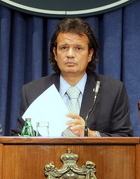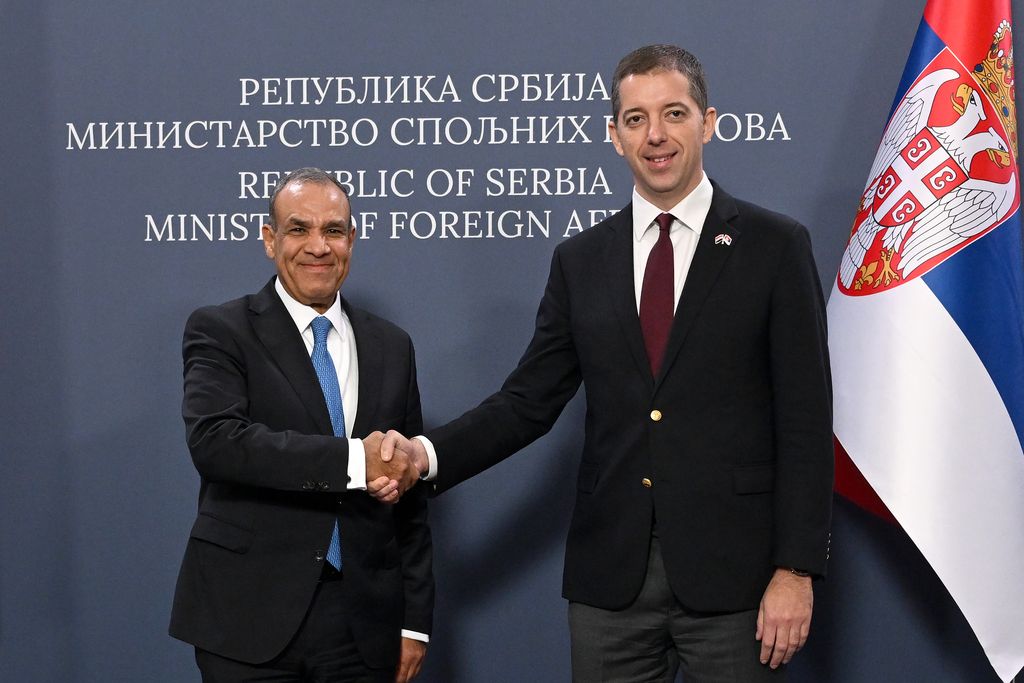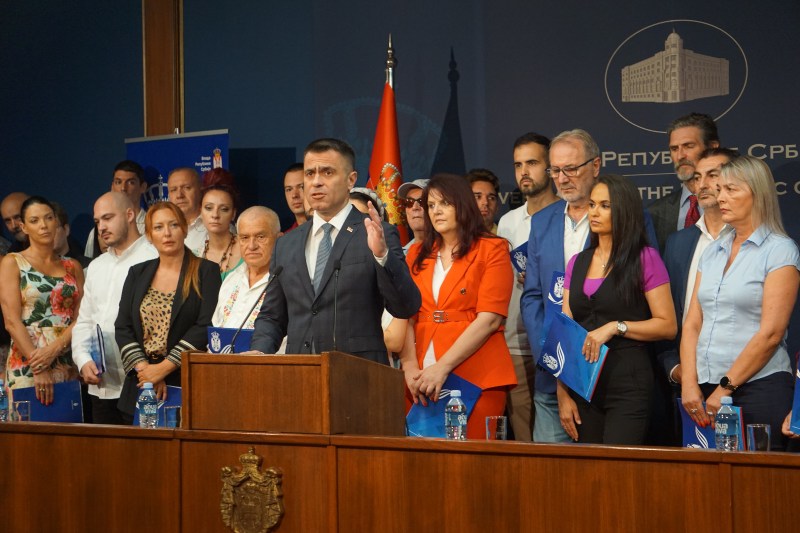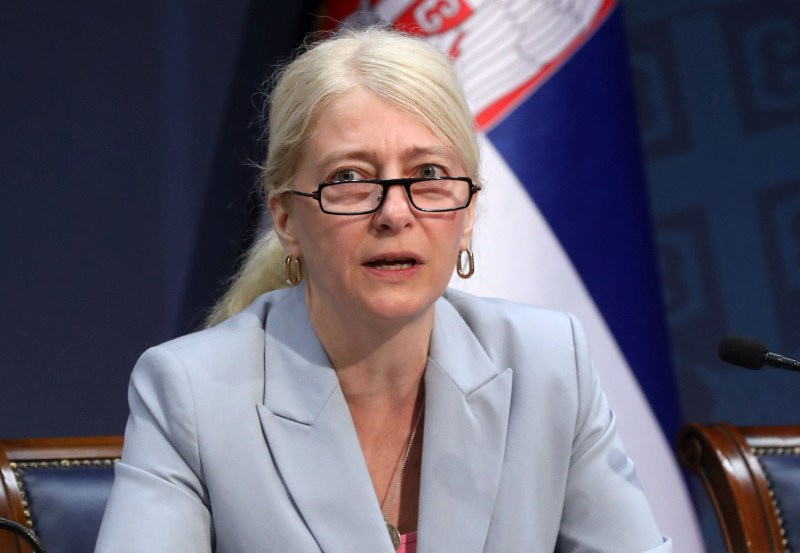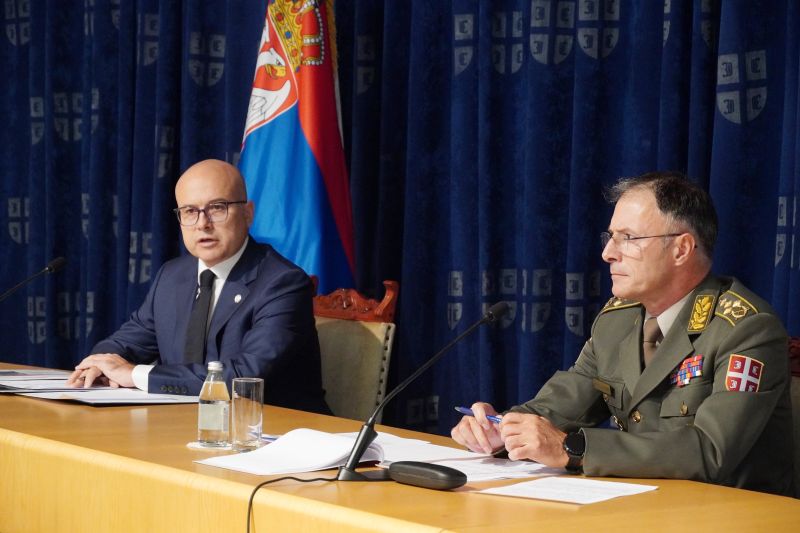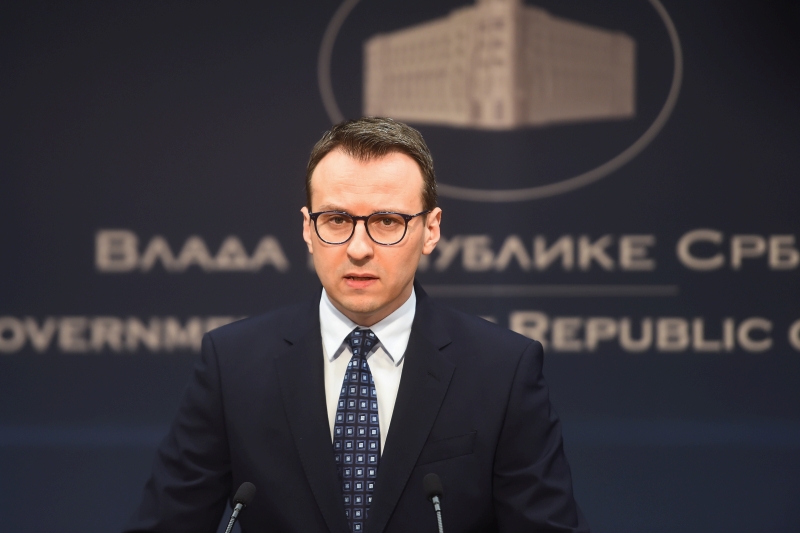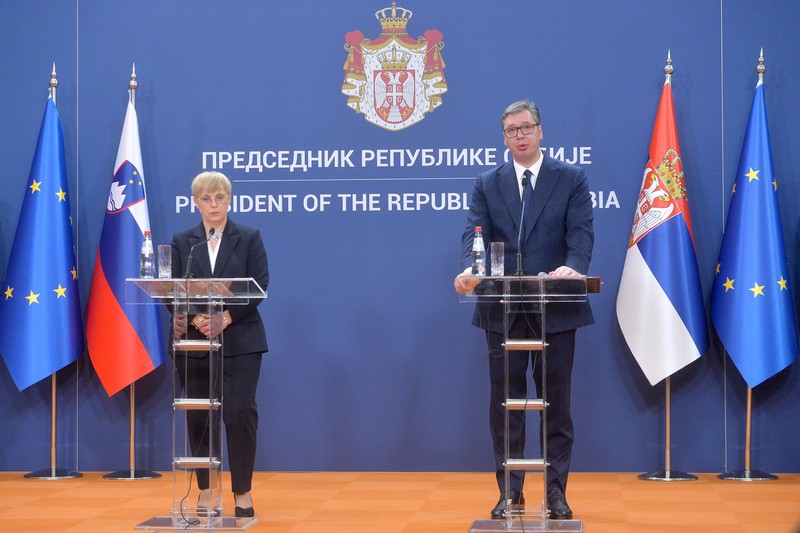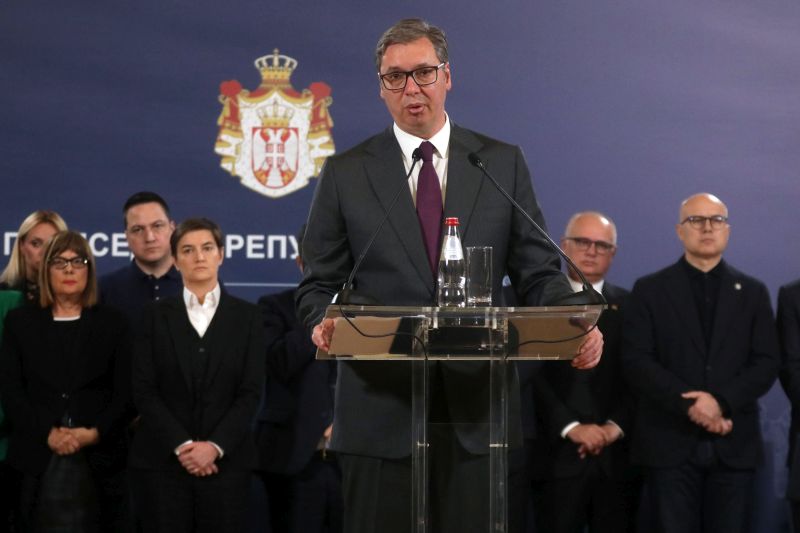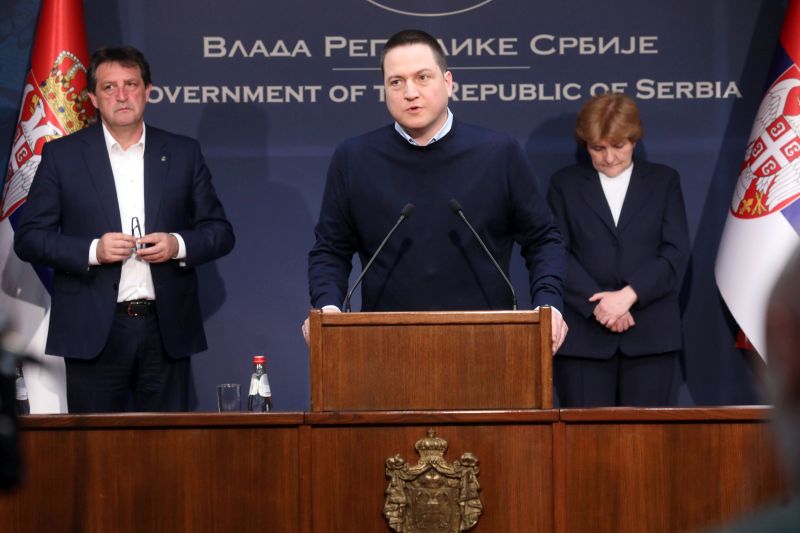Q:
A:
Growth in foreign trade, retail prices, cost of living
Belgrade,
31 August 2007
Director of the Serbian Statistical Office Dragan Vukmirovic stated today that the cost of living in Serbia in August this year, compared to the previous month rose by 3% and by 2.6% against December 2006.
Vukmirovic told a press conference that the increased cost of living was influenced mostly by the 11% rise in prices of agricultural products, which was the consequence of unfavourable weather.
He pointed to the fact that the discrepancy between the retail price index and the index of cost of living is a result of various influences of increased prices, above all of agricultural and food products.
According to Vukmirovic, prices of industrial-food products on average are higher by 2.9%, in which the prices of meat, edible oil, milk and dairy products increased.
The prices of beverages increased by 0.9%, tobacco 0.4%, while the prices of industrial-food products on average rose by 0.3%, said Vukmirovic and added that in that group of products prices of certain types of oil derivates and school text books also increased.
He said that the prices of goods and services in August on average increased by 1.2% compared to the previous month, in which the prices of goods are up by 1.5% and prices of services by 0.3%.
The total foreign trade in Serbia in the period January – July 2007 stood at $ 14,533.9, which is 40.1% more than against the same period in the previous year.
Expressed in euros, the total foreign trade of Serbia in the January – July period was €10.883.4 million, which is a growth of 29.8% compared to the same period last year.
Goods worth $ 4,802 million were exported, which is a growth of 42.8% against the same period last year, and goods worth $ 9,731.9 million were imported, which is an increase of 38.9% compared to the same period in the previous year.
Export of goods, expressed in euros, was worth €3,595 million, which is an increase of 32.3% compared to the same period in the previous year, while the import of goods was worth €7,288.4 million, which is an increase of 8.6% compared to the same period in the previous year.
The deficit for the period January – July was $4,929.9 million, which is an increase of 35.3% compared to the same period last year. Expressed in euros, the deficit stood at €3,693.4 million, which is an increase by 25.2% compared to the same period in the previous year.
Export to imports ratio stood at 49% and is higher compared to the export to imports ratio in the same period in the previous year, when it was 48%. The increase in imports was due to import of energy resources, which made up 17.7% of total import, and to the import of copper and iron ores which are used in the production of other metals and have a favourable price in the international market.
The increase in exports was caused by growth of the market (public and personal). This was also a result of the privatisation and restructuring of companies carried out so far, as well as agreements on free trade signed and ratified with countries signatory to the Stability Pact.
Another factor causing the increase in exports is the surplus in food exchange (fruit and vegetable export stood at $233 million, corn and corn products at $217 million) of which the wheat export was worth $ 67 million.
Increase in exports was also due to the surplus in trade of finished textile products, owing to the agreement signed with the EU on preferential treatment for Serbian goods, as well as favourable trade relations.
Besides favourable prices of Serbian exports on the international market, the favourable trade was also influenced by market structure, since Serbia mainly exports to markets in the Euro zone, and imports mainly come from the dollar market.
The most exported items were intermediate goods, accounting for 67.5% ($3,240.4 million) of overall exports, followed by consumer goods, which made up 26.1% ($1,255.6 million) and equipment, making up 6.4% ($306 million) of total exports.
In the period from January – July imports were also dominated by intermediate goods 61.8% ($6.018 billion), consumer goods 21% ($2,044.9 billion) and equipment 17.2% ($1,669 million) of overall imports.
Major importers of Serbian goods were Italy ($647.5 million), Bosnia-Herzegovina ($559.5 million) and Germany ($487.6 million).
The largest exporters to Serbia were Russia ($1.420 million), Germany ($900.4 million) and Italy ($802 million).
The greatest foreign trade was recorded in commerce with the EU, which accounted for more than half of total trade. The foreign trade surplus was realised in commerce with Bosnia-Herzegovina, Macedonia and Montenegro. The largest trade deficit was in commerce with Russian due to the import of oil and gas.
According to the Standard International Trade Classification (SITC) iron and steel exports had the largest share in overall exports ($685 million), coloured metals ($406 million), garments ($243 million), vegetables and fruits ($233 million) and metal products ($ 221 million). Export of these products makes up 37.2% of total exports.
The top five sectors with the largest share in imports were oil and oil derivates ($1.032 million), motor vehicles ($ 773 million), iron and steel ($517 million) and natural and industrial gas ($453 million), and their import makes up 33.6% of total imports.
He pointed to the fact that the discrepancy between the retail price index and the index of cost of living is a result of various influences of increased prices, above all of agricultural and food products.
According to Vukmirovic, prices of industrial-food products on average are higher by 2.9%, in which the prices of meat, edible oil, milk and dairy products increased.
The prices of beverages increased by 0.9%, tobacco 0.4%, while the prices of industrial-food products on average rose by 0.3%, said Vukmirovic and added that in that group of products prices of certain types of oil derivates and school text books also increased.
He said that the prices of goods and services in August on average increased by 1.2% compared to the previous month, in which the prices of goods are up by 1.5% and prices of services by 0.3%.
The total foreign trade in Serbia in the period January – July 2007 stood at $ 14,533.9, which is 40.1% more than against the same period in the previous year.
Expressed in euros, the total foreign trade of Serbia in the January – July period was €10.883.4 million, which is a growth of 29.8% compared to the same period last year.
Goods worth $ 4,802 million were exported, which is a growth of 42.8% against the same period last year, and goods worth $ 9,731.9 million were imported, which is an increase of 38.9% compared to the same period in the previous year.
Export of goods, expressed in euros, was worth €3,595 million, which is an increase of 32.3% compared to the same period in the previous year, while the import of goods was worth €7,288.4 million, which is an increase of 8.6% compared to the same period in the previous year.
The deficit for the period January – July was $4,929.9 million, which is an increase of 35.3% compared to the same period last year. Expressed in euros, the deficit stood at €3,693.4 million, which is an increase by 25.2% compared to the same period in the previous year.
Export to imports ratio stood at 49% and is higher compared to the export to imports ratio in the same period in the previous year, when it was 48%. The increase in imports was due to import of energy resources, which made up 17.7% of total import, and to the import of copper and iron ores which are used in the production of other metals and have a favourable price in the international market.
The increase in exports was caused by growth of the market (public and personal). This was also a result of the privatisation and restructuring of companies carried out so far, as well as agreements on free trade signed and ratified with countries signatory to the Stability Pact.
Another factor causing the increase in exports is the surplus in food exchange (fruit and vegetable export stood at $233 million, corn and corn products at $217 million) of which the wheat export was worth $ 67 million.
Increase in exports was also due to the surplus in trade of finished textile products, owing to the agreement signed with the EU on preferential treatment for Serbian goods, as well as favourable trade relations.
Besides favourable prices of Serbian exports on the international market, the favourable trade was also influenced by market structure, since Serbia mainly exports to markets in the Euro zone, and imports mainly come from the dollar market.
The most exported items were intermediate goods, accounting for 67.5% ($3,240.4 million) of overall exports, followed by consumer goods, which made up 26.1% ($1,255.6 million) and equipment, making up 6.4% ($306 million) of total exports.
In the period from January – July imports were also dominated by intermediate goods 61.8% ($6.018 billion), consumer goods 21% ($2,044.9 billion) and equipment 17.2% ($1,669 million) of overall imports.
Major importers of Serbian goods were Italy ($647.5 million), Bosnia-Herzegovina ($559.5 million) and Germany ($487.6 million).
The largest exporters to Serbia were Russia ($1.420 million), Germany ($900.4 million) and Italy ($802 million).
The greatest foreign trade was recorded in commerce with the EU, which accounted for more than half of total trade. The foreign trade surplus was realised in commerce with Bosnia-Herzegovina, Macedonia and Montenegro. The largest trade deficit was in commerce with Russian due to the import of oil and gas.
According to the Standard International Trade Classification (SITC) iron and steel exports had the largest share in overall exports ($685 million), coloured metals ($406 million), garments ($243 million), vegetables and fruits ($233 million) and metal products ($ 221 million). Export of these products makes up 37.2% of total exports.
The top five sectors with the largest share in imports were oil and oil derivates ($1.032 million), motor vehicles ($ 773 million), iron and steel ($517 million) and natural and industrial gas ($453 million), and their import makes up 33.6% of total imports.

